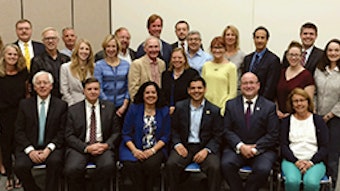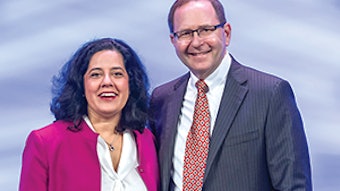Annual Meeting 2016: Member Engagement & Unity
Value. Lately everyone is insisting on it, from value-based healthcare to value-added mobile data family plans. With so many options available to us, we’re right to insist on value, including in our professional association memberships. AAO-HNS offers value-added benefits that help Members achieve excellence and provide the best ear, nose, and throat care. The American Academy of Otolaryngology—Head and Neck Surgery provides value for our Members through professional and public education, research, and health policy and legislative advocacy. As a membership organization, the Academy exists solely for the benefit of our Members and advancement of the specialty. The value of membership extends far beyond efforts to provide clarity in these uncertain times. As a Member, you have access to exclusive programs and resources designed just for you. Whether you practice general or subspecialty otolaryngology, and regardless of your practice setting, there are Academy resources just for you. We exist for you. BOG’S ‘BRING HOME THE ACADEMY’ WORKED TO BRING HOME VALUE The theme of this year’s Board of Governors (BOG) activities was “Bring Home the Academy.” The campaign was launched to help increase awareness of the BOG’s critical role as the grassroots arm of the AAO-HNS, highlighting the numerous resources available for state/local/regional otolaryngology societies and their representatives to the BOG. New toolkits and slide presentations were developed and a virtual society platform was created to help Members “Bring Home the Academy.” Membership by the numbers (as of October 20, 2016) 11,884 members; 93% retention rate 880 new and reinstated Members 69% Fellows, board certified 17% Members, not board certified 12% Residents 9% International members PRIMARY SUBSPECIALTIES BY THE NUMBERS 49% General Otolaryngology 11% Head and Neck Surgery 10% Facial Plastic Surgery 9% Pediatric Otolaryngology 5% Neurtology 5% Otology/Audiology 4% Rhinology 4% Laryngology 3% Allergy 1% Sleep Medicine
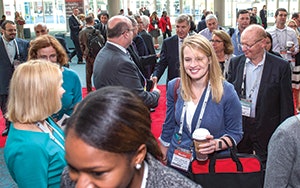
AAO-HNS offers value-added benefits that help Members achieve excellence and provide the best ear, nose, and throat care.
The American Academy of Otolaryngology—Head and Neck Surgery provides value for our Members through professional and public education, research, and health policy and legislative advocacy. As a membership organization, the Academy exists solely for the benefit of our Members and advancement of the specialty. The value of membership extends far beyond efforts to provide clarity in these uncertain times.
As a Member, you have access to exclusive programs and resources designed just for you. Whether you practice general or subspecialty otolaryngology, and regardless of your practice setting, there are Academy resources just for you. We exist for you.
BOG’S ‘BRING HOME THE ACADEMY’ WORKED TO BRING HOME VALUE
The theme of this year’s Board of Governors (BOG) activities was “Bring Home the Academy.” The campaign was launched to help increase awareness of the BOG’s critical role as the grassroots arm of the AAO-HNS, highlighting the numerous resources available for state/local/regional otolaryngology societies and their representatives to the BOG. New toolkits and slide presentations were developed and a virtual society platform was created to help Members “Bring Home the Academy.”
Membership by the numbers
(as of October 20, 2016)
- 11,884 members; 93% retention rate
- 880 new and reinstated Members
69% Fellows, board certified
17% Members, not board certified
12% Residents
9% International members
PRIMARY SUBSPECIALTIES BY THE NUMBERS
49% General Otolaryngology
11% Head and Neck Surgery
10% Facial Plastic Surgery
9% Pediatric Otolaryngology
5% Neurtology
5% Otology/Audiology
4% Rhinology
4% Laryngology
3% Allergy
1% Sleep Medicine
<1% Endocrine Surgery
Election of Officers: During this year’s Board of Governors (BOG) General Assembly meeting at the AAO-HNSF 2016 Annual Meeting & OTO EXPOSM, Stacey L. Ishman, MD, MPH, assumed the role of BOG Chair, and David R. Edelstein, MD, became Immediate Past Chair. Sanjay R. Parikh, MD, was elected BOG Chair-Elect and Daniel L. Wohl, MD, was elected BOG Member-at-Large.
BOG Governance & Society Engagement Committee: The Connecticut Ear, Nose & Throat Society was awarded the Model Society Award, the Virginia Society of Otolaryngology–Head & Neck Surgery (VSO-HNS) was awarded the Model Society Honorable Mention Award, and Eiji Yanagisawa, MD, was awarded the BOG Practitioner Excellence Award. In addition, the committee has begun hosting online virtual societies via GoToMeeting to assist in launching new societies and improving awareness of AAO-HNS and BOG programs.
BOG Socioeconomic & Grassroots Committee: Twice a year, the committee conducts a survey of local, state, national, and specialty society members. The latest survey sought input on the impact of Emergency Room call requirements. The goal of this survey was to determine trends and concerns among membership relating to ER call requirements, and to steer common and significant issues to the BOG and AAO-HNS for further study or discussion. A survey on implementation of the Affordable Care Act was also conducted in 2016.
BOG Legislative Affairs Committee: In 2016, the committee continued to work via two workgroups: PROJECT 535 and Legislative Grassroots. Both workgroups held quarterly conference calls, with the last being in July. The PROJECT 535 workgroup established a strategy to designate certain BOG members to serve as state or regional managers to help with recruitment efforts. The Grassroots workgroup provided feedback on the Academy’s outreach efforts, including a questionnaire being distributed to State Trackers seeking input on ways to improve the program and to verify states are being properly monitored. Workgroup efforts, with a focus on Member engagement, will continue in 2017.
AAO-HNS/F 2016 Leadership Forum & BOG Spring Meeting: This year’s AAO-HNS/F 2016 Leadership Forum & BOG Spring Meeting was productive, with nearly 200 attendees. The four-day event included a new mENTorConnect Welcome Reception; a combined luncheon with the AAO-HNS/F Boards of Directors; renowned keynote speakers; a General Assembly with AAO-HNS/F Presidential candidate speeches; and 21 sessions offering a total of six CME credits.
WHAT’S NEXT?
The BOG looks forward to supporting the launch of new virtual societies and efforts to “Bring Home the Academy” via recruitment of volunteers for various advocacy initiatives, specifically PROJECT 535, and new initiatives to strengthen communications with and through the BOG Representatives.
SECTION FOR RESIDENTS AND FELLOWS-IN-TRAINING (SRF)
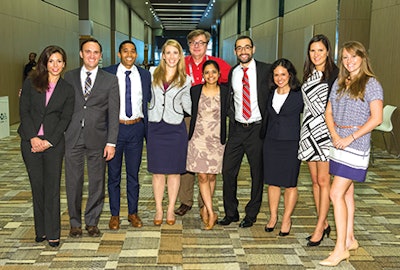 SRF members captured the spirit of engagement while working on strategic activities.
SRF members captured the spirit of engagement while working on strategic activities.Growth and Visibility: The SRF continues to work to increase the number and visibility of its Members at specialty society meetings. In addition, a new SRF brochure was developed to promote the section and its numerous resources.
Connecting and communicating: As part of its quarterly eNewsletter, a new segment was included summarizing important legislative topics relevant to residents and the specialty, such as audiology scope of practice and GME funding. In addition, the first resident-focused podcast for the Academy was created. The annual 2016 SRF survey was completed with 341 responses and published in the November edition of the Bulletin.
Educating: A manuscript was published in Otolaryngology–Head and Neck Surgery on fellowship trends for otolaryngology residents. Also, at the AAO-HNSF 2016 Annual Meeting & OTO EXPO℠, the SRF, in conjunction with the Endocrine Surgery Committee, presented a Miniseminar, “Intraoperative Nerve Monitoring in Thyroid Surgery,” with two resident panelists joining other leaders in the field.
Leadership: With 32 SRF Members in attendance, the section was well-represented at the AAO-HNS/F 2016 Leadership Forum & BOG Spring Meeting and assisted in the development of the programming. Following the event, SRF leaders visited Members of Congress on Capitol Hill to discuss legislative proposals impacting otolaryngology patients and the future of the specialty.
WOMEN IN OTOLARYNGOLOGY (WIO) SECTION
Communication: Over the past year, the WIO Section enhanced its member communications through website updates, social media outreach, posts on ENTConnect, articles in the Bulletin, and quarterly eNewsletters with Member Spotlights and Shout-Outs.
Leadership and Mentoring: Building upon the success of last year’s pilot initiative, the 2016-2017 WIO Section Leadership Training Program launched at September’s Annual Meeting in San Diego. This unique opportunity supports the professional leadership development and education of female AAO-HNS Members in an effort to promote women into leadership positions within the WIO Section, the AAO-HNS/F, and other facets of the participants’ professional and personal lives. The year-long program consisting of in-person meetings and topic-based webinars has 17 participants.
Recognition: The Section continued to recognize its peers through an awards program. The Helen F. Krause, MD Memorial Trailblazer Award was presented to Karen M. Kost, MD. Kara S. Davis, MD, was presented with the inaugural Exemplary Senior Trainee Award.
 The WIO Sunrise Yoga session at the Annual Meeting was an inspired way to energize the mind and body for sustained performance through the day.
The WIO Sunrise Yoga session at the Annual Meeting was an inspired way to energize the mind and body for sustained performance through the day.YOUNG PHYSICIANS SECTION (YPS)
Communication: In its second year as a Section, the YPS had a very successful and productive year. The newly created YPS Communications and Recruitment taskforces continued to grow their Facebook and ENTConnect presence. Multiple online roundtable sessions were held, including topics of Physician Contracts and Maintenance of Certification (MOC).
Engagement and representation: A new appointed leadership liaison was created with the American Board of Otolaryngology (ABOto). In addition, nominations of section members were made for all seven Advisory Clinical Committees for the Regent℠ registry and were accepted by the AAO-HNS/F Board of Directors. Also, in an effort to identify liaisons with individual state societies, a YPS State Delegates program was started in collaboration with the AAO-HNS Board of Governors (BOG), and the program continues to grow.
Programming: The newly created Programming taskforce provided content of interest to YPS physicians at both the Spring Leadership Forum and fall Annual Meeting. In the spring, the section presented a panel on developing short-term and long-term career plans, as well as hosted the speed mentoring session. At the Annual Meeting, the Section had three co-sponsored Miniseminars accepted, including topics on leadership and social media.
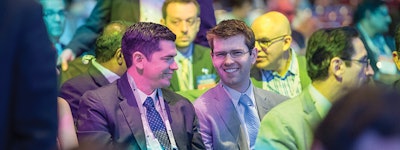 Members networked with colleagues and associates prior to the Annual Meeting Opening Ceremony.
Members networked with colleagues and associates prior to the Annual Meeting Opening Ceremony.GLOBAL AFFAIRS: INCREASING OUR VALUE 4 INTERNATIONAL MEMBERS
INTERNATIONAL ACTIVITY AT THE ANNUAL MEETING
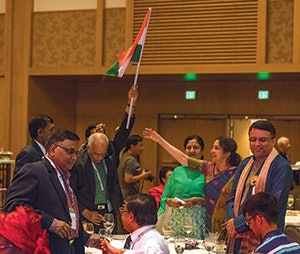
INTERNATIONAL ADVISORY BOARD
The newly developed International Advisory Board (IAB) will provide international otolaryngologist-head and neck surgeons more meaningful representation in AAO-HNSF governance. The IAB general assembly will be composed of delegates representing more than 60 International Corresponding Societies (ICS) and 10 international Members who will serve as “at-large” representatives. The General Assembly will be chaired by Johan J. Fagan, MD, and vice chaired by Sady Selaimen da Costa, MD, who will each serve a two-year term. Dr. Fagan will also serve as a non-voting member of the AAO-HNSF Board of Directors in an advisory role, representing issues and concerns of the international constituency.
HUMANITARIAN EFFORTS
AAO-HNSF offers financial support to SRF participants for humanitarian missions that deliver care to those that are in need. In 2016, AAO-HNSF provided support to 15 Members who then traveled and served in 10 developing countries and territories.
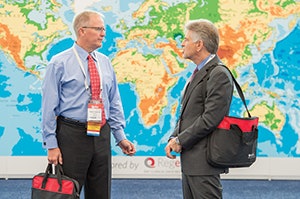
INTERNATIONAL JOINT MEETINGS
- Participated in the 35th Congreso Panamericano de Otorrinolaringología y Cirugía de Cabeza y Cuello June 13-16 in Havana, Cuba, by presenting a symposium that included AAO-HNSF leadership.
- Participated in the All Africa ENT & Audiology Congress (AAENTA) June 19-22 in Kigali, Rwanda by presenting a symposium.
